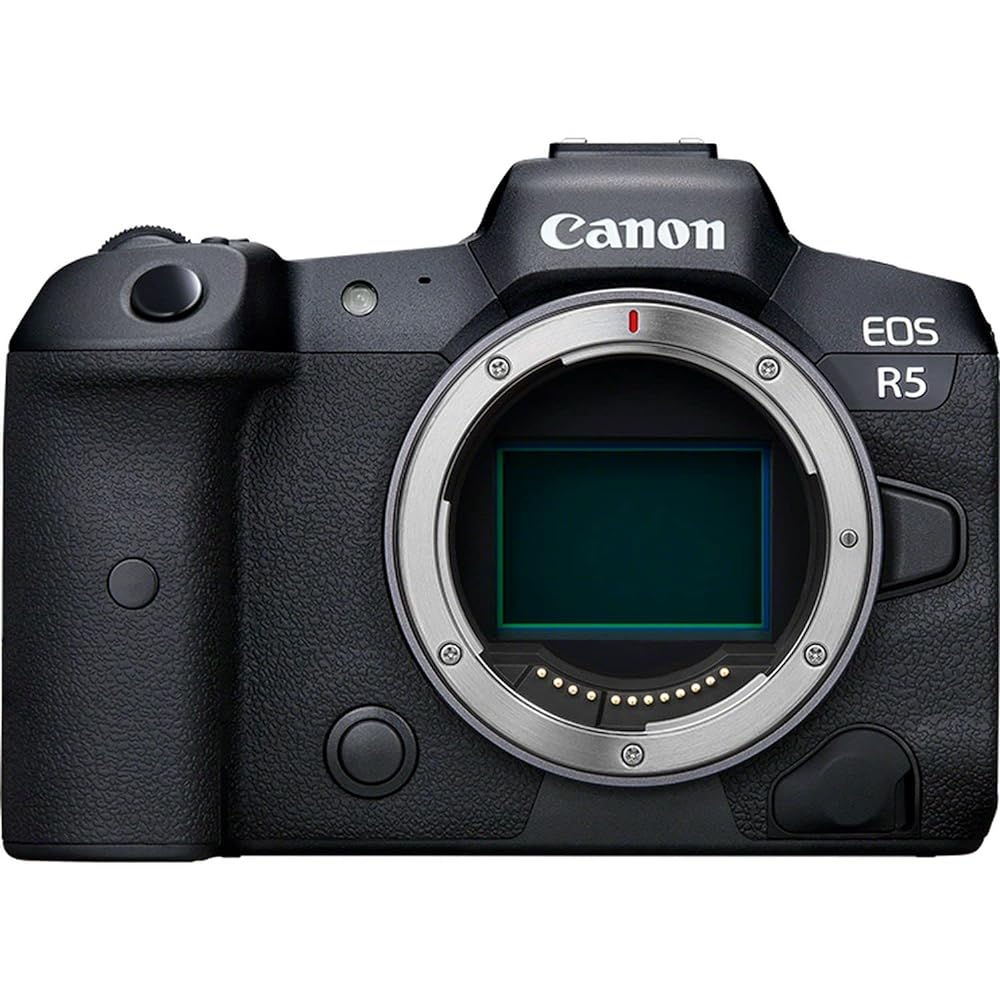Introduction
The Leica M11 is a digital M-system rangefinder camera with a 60 megapixel, 35mm full-frame sensor.
It uses a brand new BSI (BackSide Illuminated) CMOS sensor with a specially developed dual-layer UV/IR cut-off filter.
Key features of the M11 include an expanded sensitivity range of ISO 64-50,000, the latest-generation Maestro III image processor, extended battery life, USB-C connectivity, 64Gb internal storage, a 2.3 million pixel touchscreen LCD, and a more streamlined and intuitive menu system.
The recommended retail price of the Leica M11 is £7,500 / $8,995 and it is available in classic silver or black.
The Leica M11 is designed and made in Germany.
Ease of Use
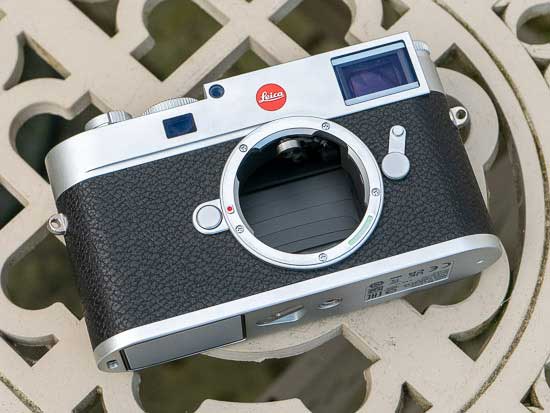 |
The new M11 that Leica sent us for review is the classic silver chrome version, which features a full-metal housing made of magnesium with a brass top plate and black leatherette covering weighing in at 640 grams / 1.2 lb including the battery.
In a departure from tradition, the black version swaps out the brass top plate for aluminum, resulting in it being 20% / 100 grams lighter than the classic silver model. The black M11’s top plate also has a more scratch-resistant coating than the silver edition.
There is nothing resembling a traditional handgrip provided with the camera at all, just a raised thumb-shaped rest on the rear. Having said that, the solidity and weight of the silver M11’s build means that it didn’t feel like the camera would suddenly slip from our grasp at any point.
The top plate of this version of the M11 is milled from a solid block of brass, ground and polished by hand in a painstaking 40-minute process, which combined with the full-metal, magnesium alloy chassis results in an immensely solid feeling camera that goes some way at least to justifying the sky-high price-tag.
Special rubber seals provide some protection against light showers and dust, although Leica stop short of claiming that the M11 is fully weatherproof.
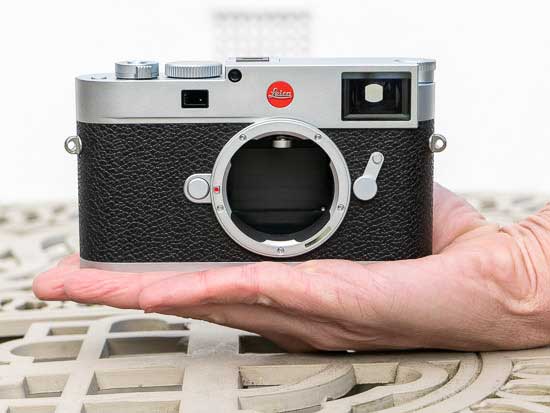 |
The Leica M11 has a brand new 60 megapixel full-frame BSI (BackSide-Illuminated) CMOS sensor developed especially for the camera, a 50% increase on the resolution offered by last year’s 40 megapixel M10-R model.
In conjunction with the newest Maestro III image processor, this allows the M11 to output 14-bit raw files with a claimed dynamic range of up to 15 stops, provide an extensive ISO range of 64-50,000, and shoot 60 megapixel images at 4.5fps.
It also has a special IR + UV cut filter in front of the sensor which corrects even the most oblique rays of incident light and a new colour filter array that offers more natural colour reproduction than previous M-system cameras.
Whilst 60 megapixels will undoubtedly be a big draw for potential owners of this camera, Leica have also sensibly provided two smaller 36 and 18 megapixel modes which help avoid some of the processing and storage challenges of the the 60 megapixel mode while also boosting the burst shooting buffer times. In addition the smaller modes are claimed to also offer mproved dynamic range and noise levels because of the unique pixel binning process.
So the M11 can be set to record 60, 36 or 18 megapixels DNG Raw images, either using the full sensor area or alternatively incorporating a 1.3x or 1.8x digital zoom for the latter two modes, something that Leica are calling “Triple Resolution Technology”.
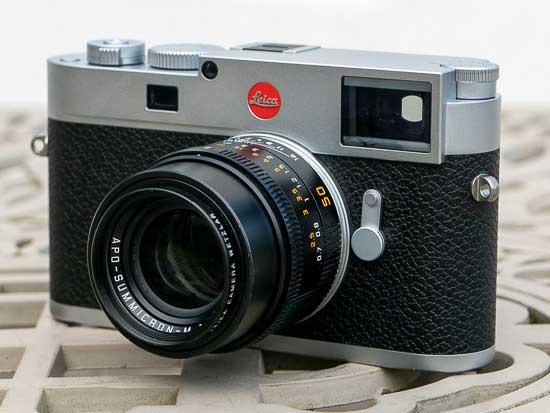 |
Another welcome change connected to the image sensor is the way in which the M11 meters light. Previous models used a very basis centre-weighted metering system when using the camera in rangefinder mode, whereas the M11 additionally offers multi-field and spot metering in all modes, including rangefinder mode, as it now uses the image sensor for metering rather than the shutter curtain.
Speaking of the shutter curtain, the M11 is the first ever M-series camera to offer an electronic shutter in addition to its traditional mechanical shutter. This allows it to offer a top shutter speed of 1/16000th second in addition to the 1/4000th second speed when using the mechanical shutter, which in turn allows you to shoot both completely silently without vibration and also shoot at wide-open apertures in bright sunlight using the fastest Leica lenses without having to employ an ND filter.
The M11 is a very traditional camera that doesn’t provide any form of image stabilisation, either in the camera body or in the M-series lenses. Leica have made one key improvement, though, which makes focusing in live view mode easier than before, namely the addition of electronic stabilization to the magnified view when using the the rear LCD or optional Visoflex 2 EVF.
As the model name indicates, potential purchasers of the M11 get to avail themselves of around 50 directly compatible lenses in Leica’s current M range – which it believes should allow photographers to fully exploit the potential for detail denoted by that 60MP chip – plus many more from the past besides; thanks to the M-mount having been around since 1954.
Leica’s R series lenses can further be used with the camera – albeit via an adapter accessory. So there’s a lot of very high ‘quality’ glass that can be married to the sensor provided, should you already own some or your budget can stretch to it.
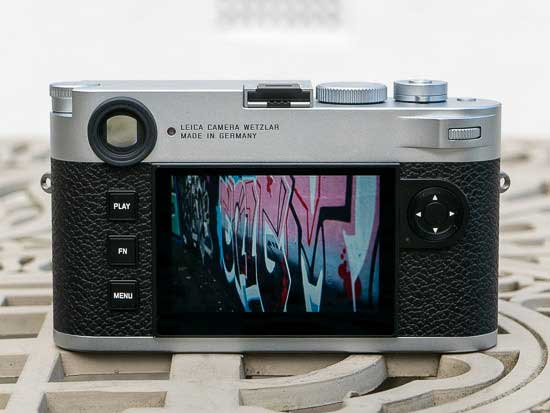 |
Videographers will want to look elsewhere however, as the Leica M11 is a dedicated stills camera without any facility for filming whatsoever; leading some commentators to opine that it feels like a camera from the 1950s. But perhaps, the ‘modern’ advantage of digital innovation aside, that’s largely the point.
The dimensions of the M11 are virtually identical to the previous M10 model, measuring 139 x 38.5 x 80mm – indeed, very little has changed in terms of the camera’s external design since the M10 was first released five years ago.
The front of the Leica M11 is adorned with the famous red Leica badge and logo directly above the lens. Top-left of the lens, if viewing the camera front-on, is a rectangular porthole containing the traditional AF assist/self timer lamp.
A silver lens release button is on the left-hand side of the lens mount, and over on the right is the very traditional frame-line selection lever, which allows you to see the field of view of various lenses without actually having to mount them on the camera (in the dual combinations of 28+90mm, 35+135mm, 50+75mm).
The configurable function button that was on the front of the M10 has been more logically moved to the M11’s top-plate, alongside the shutter button, which when pressed displays a magnified view on the LCD screen to aid with precise focusing adjustment.
 |
Squeeze the shutter release button in single shot mode to take a maximum 60 megapixel resolution photo and the screen instantly displays the resultant image.
Take a top quality JPEG and Leica’s ‘DNG’ file version of Raw and the camera isn’t any noticeably slower, with the advantage of the DNG format that it can be opened directly by Photoshop without any specialist conversion software required.
Even better, thanks to a generous 3GB buffer memory, the M11 is capable of sequential shooting at up to 4.5 frames per second at full 60mp resolution for up to 15 Raw files.
If you want to shoot at 4.5fps for longer, dropping down to M-DNG/36MP increases the buffer to 30 Raw files, and down again to S-DNG/18MP provides unlimited shooting, even when shooting RAW.
The M11 has a dedicated top-plate dial via which manual adjustments can be made to the shutter speed, ranging from 8 seconds to 1/4000th of a sec, with Bulb and Auto options too.
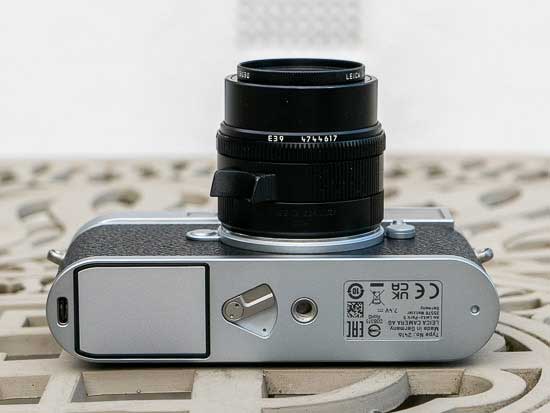 |
Naturally there is a vacant hotshoe for an accessory flash on top of the camera, which also accepts the optional Leica Visoflex 2, a 3.7 megapixel electronic accessory viewfinder if you prefer to compose with an EVF.
The shutter release button is threaded for a traditional screw-in quick release cable, and is encircled by the On/Off switch, with the camera taking about a second to ready itself for shooting.
The new M11 retains the top-mounted ISO setting dial over on the left of the camera, which is the same place that you’d find the film rewind lever on cameras like the Leica M7.
You have to lift it up to unlock it, which is a little awkward given its diminutive size, but does prevent it from being accidentally moved. While this interrupts the classic rounded styling of the Leica M11’s design, it does mean that all of the core shooting parameters can be set via external controls, with no need to actually turn the camera on and use its menu system, which makes for a very pleasant shooting experience.
When you do need to use the camera’s main menu, you’ll find that it now very closely follows the system used on the Leica SL2 and Q2 cameras. One press of the Menu button opens the customisable control panel which shows the current key camera settings with two rows of six icons displayed underneath, including the last which then dives into the menu system proper.
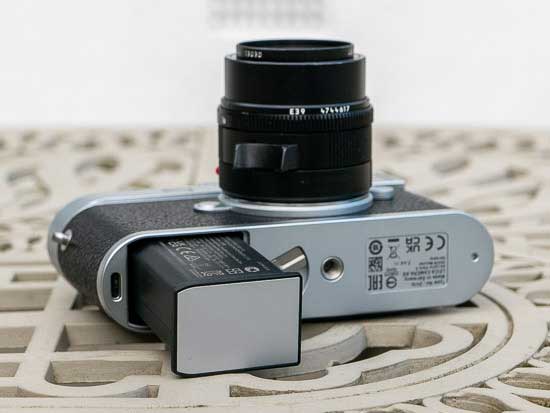 |
Compared to the multitude of options that other manufacturer’s cameras offer, the Leica M11’s main menu is refreshingly pared back, with a mere 26 options in total. Annoyingly, although you can directly interact with the control panel via the LCD screen, you can’t also use the touch-screen interface to navigate through the menu or select options, instead relying on the navigation wheel/arrows.
Due to the small size of the ISO dial, you can’t actually access all of the available ISO settings from it – instead you can choose directly from 64-6400, or select the M option which can be configured to any one of the ISO settings, including the higher ISO values. There’s also an A option for Auto ISO if you prefer to leave control to the camera.
The size of the back plate LCD screen is 3-inches and the resolution is a respectable 2.3 million pixels, bringing the M11 up to date with the latest digital cameras.
With the 3-inch LCD screen taking up about two thirds of the back plate, this leaves room for a column of 3 square buttons ranged down the left hand side of the screen, whilst over at the right hand side sits a familiar cross key/command pad style arrangement.
The buttons at the left of the LCD are both clearly marked and instantly comprehended. From the top we have a Play button for reviewing previously captured images, a configurable FN button which by default accesses the Live View mode, and a Menu button for opening the customisable Favorites menu and and the Main Menu system.
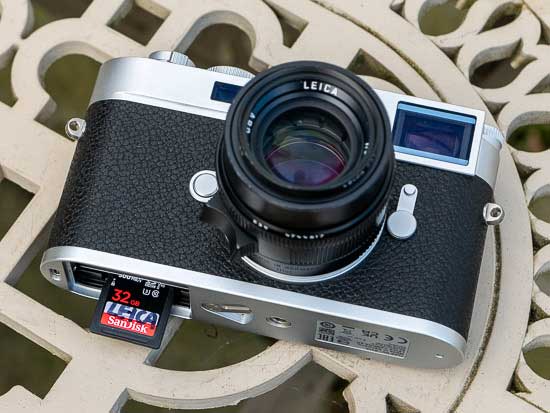 |
Above the LCD screen is the viewfinder, which is the same as the one on the M10, offering a magnification factor of 0.73x. The widest focal length that it covers is 28mm, so you’ll have to use the LCD screen or buy the optional EVF for wider-angle lenses.
The Leica M11 features a thumb-operated customisable command dial over at the top right which with a single push by default allows you to set the exposure compensation, with adjustable settings ranging from a standard -3EV to + 3EV. This dial also zooms into the magnified live view and magnifies images in playback mode.
Three different focusing aids are provided on the Leica M11 – auto magnification (x3 or x6), focus peaking and auto magnification plus focus peaking. With the bigger screen scale and higher resolution we found it easier to accurately determine pin sharpness than on previous Leica digital cameras.
The set of un-marked cross keys on the right of the LCD screen moves the magnification loupe freely around the frame for even better assessment of sharpness, either on the LCD or the Visoflex electronic viewfinder.
In the centre of the cross-keys we find an un-marked button which acts like a standard ‘display’ button. A press of this in capture mode removes the icons for the shooting mode in play, number of shots remaining, battery life, focus and metering mode from the screen to provide a clearer view of the subject.
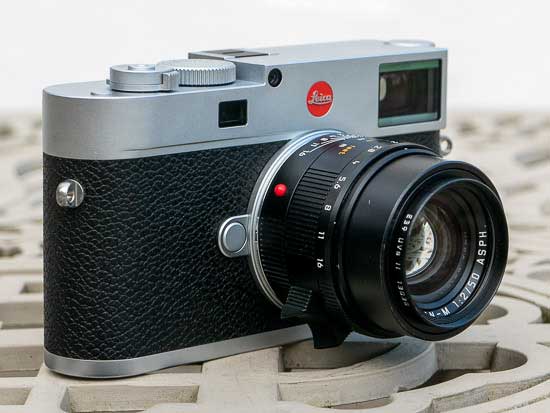 |
The left and right hand flanks of the M11 are devoid of any features save for metal lugs for attaching the shoulder strap.
The base of the Leica M11 has a screw thread that’s perfectly inline with the centre of the lens mount, with the catch protected battery compartment housing both the supplied BP-SCL7 1800mAh lithium-ion battery, good for around 700 shots in accordance with the CIPA Standard when using the live view mode and a whopping 1700 shots by Leica’s estimation when only using the optical rangefinder, and the SD card slot alongside it.
Eagle-eyed readers and avid Leica fans will note that the M11 has rather controversially omitted the traditional removable base plate in favour of a dedicated compartment which provides more direct access to the battery and UHS-II SD card, something that purists may not like but which does undoubtedly help to speed up the camera’s operation.
In addition to the SD card slot, the Leica M11 offers a generous internal storage capacity of 64 gigabytes, with the option to use it either sequentially, as a backup, or even for recording Raw files to one and JPEGs to the other.
Alongside is a brand new USB-C slot that allows the camera to be charged using most USB-C chargers and out in the field using an external powerbank. The M11’s battery can also be charger externally via the dedicated USB-C Leica charger that’s provided in the box.
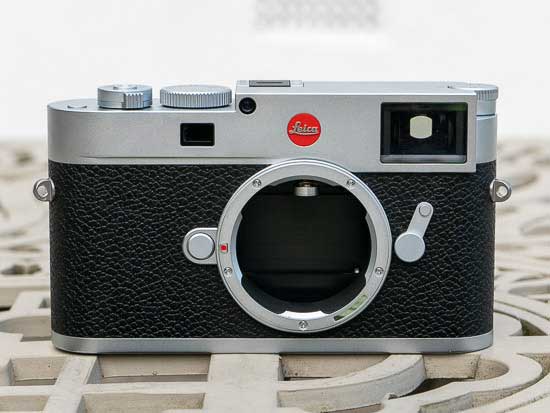 |
The other main benefit offered by the USB-C port is the ability to to establish a wired connection between the Apple “Made for iPhone and iPad” certified M11 and an iPhone or iPad using the provided Leica FOTOS cable.
This automatically opens the Leica FOTOS app which provides all the same functionality that’s available through a wi-fi connection, just with the added reliability and increased speed of the physical cable.
The main caveats are that the Leica USB-C to Lightning cable obviously only works with Apple iOS devices and not Android, and Leica’s unique cable can only be used with the M11 and not for charging or syncing other Lightning devices.
The Leica M11 features built-in Bluetooth 4.2 BR/EDR/LE and dual-band 2.4/5Ghz 802.11 a/b/g/n/ac Wave2 Wi-Fi 5 connectivity for wirelessly connecting to other devices such as a smartphone, tablet or computer.
You can easily transfer your images and also control the camera remotely via the free Leica Fotos app, which, amongst other functions, allows remote setting of the shutter speed and aperture. The app also allows you to send your images to social networks or email them, with more features on the way later in 2022 via a firmware update.
Image Quality
All of the sample images in this review were taken using the 60 megapixel Large setting, which produces an average image size of around 20Mb for JPEGs and 85Mb for RAW files.
The Leica M11 recorded still images of excellent quality during the review period.
This camera produces noise-free JPEG images at ISO 64 up to ISO 1600, with some noise appearing at ISO 3200. The faster settings of ISO 6400 through to 12500 are still usable, although we’d suggest avoiding both ISO 25000 and 50000 if at all possible. The corresponding Raw files have much less obvious colour artifacts but are noticeably less sharp than their JPEG equivalents.
The night photograph was very good, with the maximum shutter speed of 60 minutes allowing you to capture enough light in every situation, and the Film Styles, although limited in number and customisability, do allow you to quickly change the look of JPEG files.
Noise
ISO sensitivity can be set between ISO 64 and ISO 50000 in full-stop increments. Here are some 100% crops which show the noise levels for each ISO setting, with JPEG on the left and RAW on the right.
| JPEG | RAW |
|
ISO 64 (100% Crop) |
ISO 64 (100% Crop) |
 |
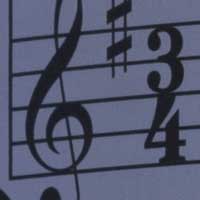 |
|
ISO 200 (100% Crop) |
ISO 200 (100% Crop) |
 |
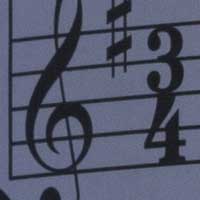 |
|
ISO 400 (100% Crop) |
ISO 400 (100% Crop) |
 |
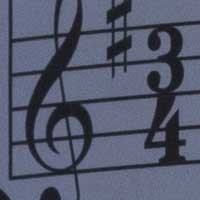 |
|
ISO 800 (100% Crop) |
ISO 800 (100% Crop) |
 |
 |
|
ISO 1600 (100% Crop) |
ISO 1600 (100% Crop) |
 |
 |
|
ISO 3200 (100% Crop) |
ISO 3200 (100% Crop) |
 |
 |
|
ISO 6400 (100% Crop) |
ISO 6400 (100% Crop) |
 |
 |
|
ISO 12500 (100% Crop) |
ISO 12500 (100% Crop) |
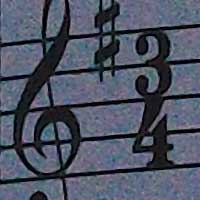 |
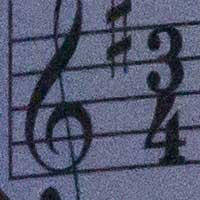 |
|
ISO 25000 (100% Crop) |
ISO 25000 (100% Crop) |
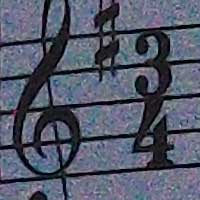 |
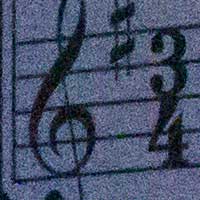 |
|
ISO 50000 (100% Crop) |
ISO 50000 (100% Crop) |
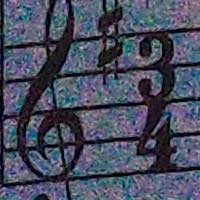 |
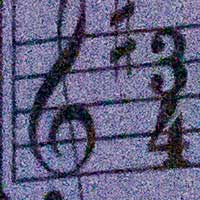 |
Night
The Leica M11’s maximum shutter speed is 60 seconds using the electronic shutter and a whopping 60 minutes using the mechanical shutter, and there’s a B (Bulb) setting on the shutter speed dial for even longer Timed exposures, which is excellent news if you’re seriously interested in low light photography.

Film Styles
Leica’s Film Styles are preset combinations of different sharpness, contrast and saturation settings, for JPEGs only. The Leica M11’s five available Film Styles are shown below in the following series, which demonstrates the differences between them. You can also tweak the preset styles so that you can create your own particular look, although you can’t create brand new ones.
|
Standard |
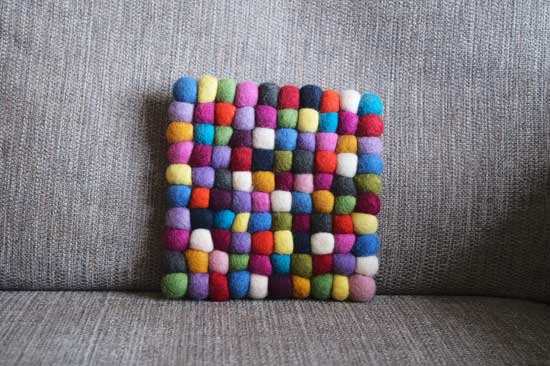 |
|
Vivid |
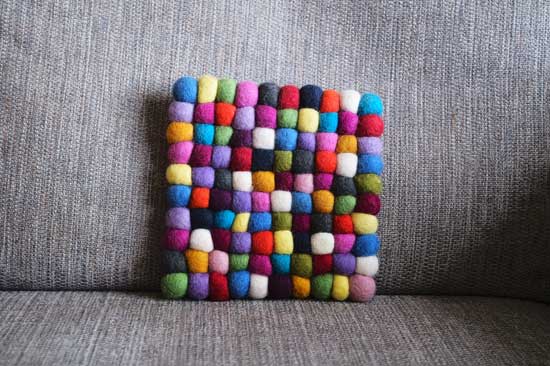 |
|
Natural |
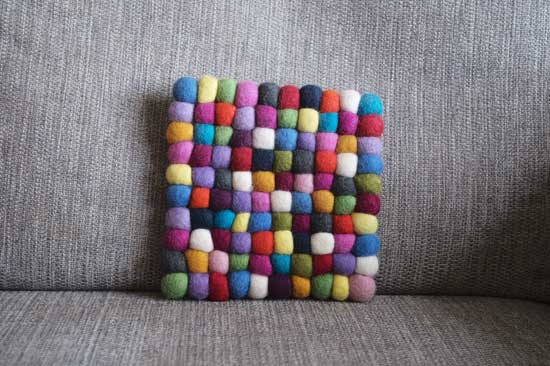 |
|
Monochrome |
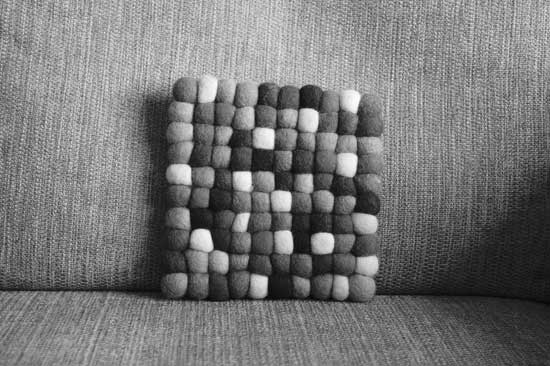 |
|
Monochrome High Contrast |
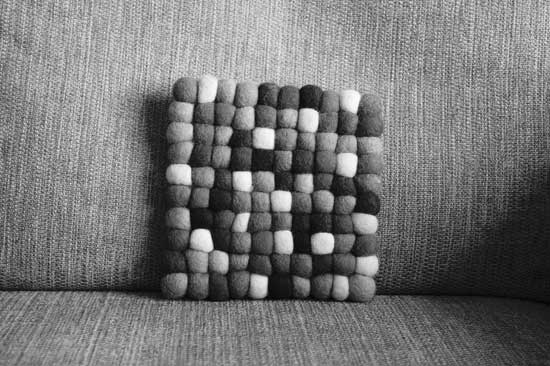 |
Sample Images
This is a selection of sample images from the Leica M11 camera, which were all taken using the 60 megapixel Large JPEG setting. The thumbnails below link to the full-sized versions, which have not been altered in any way.
Sample RAW Images
The Leica M11 enables users to capture RAW and JPEG format files. We’ve provided some Leica RAW (DNG) samples for you to download (thumbnail images shown below are not 100% representative).”
Product Images



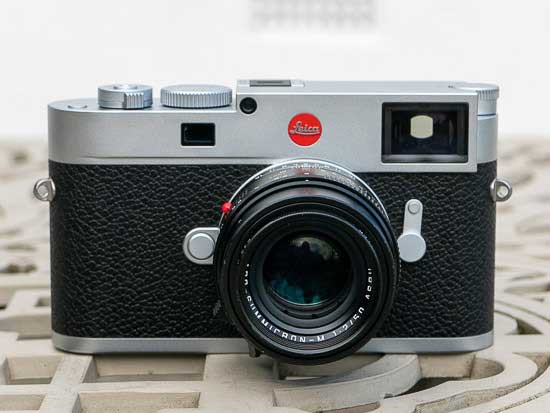


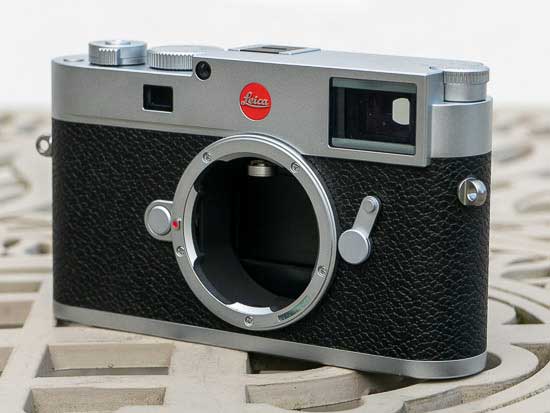

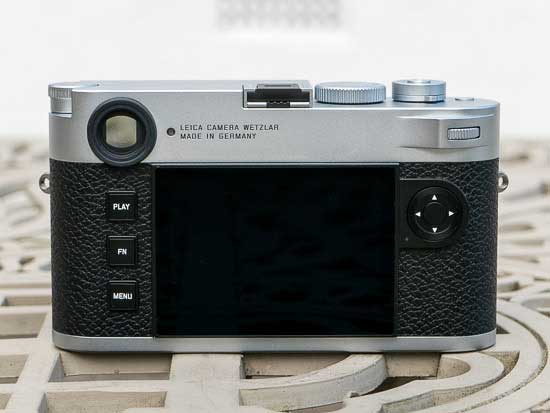

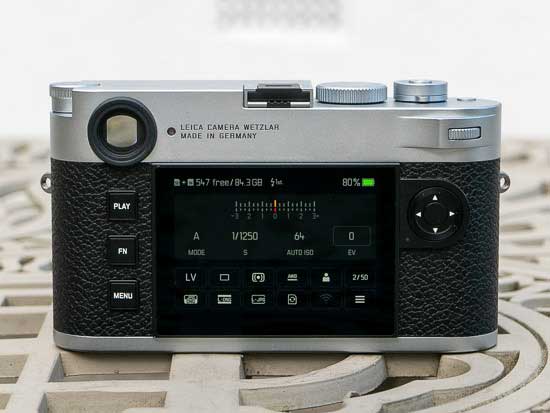
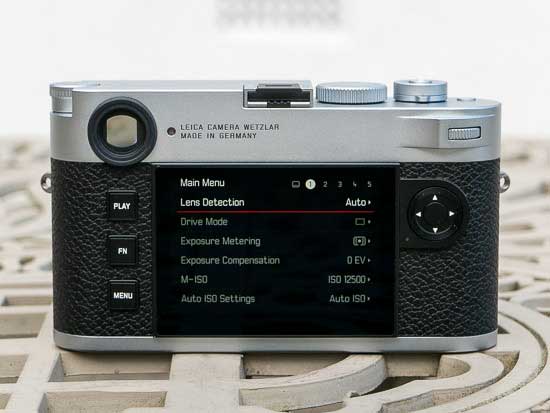

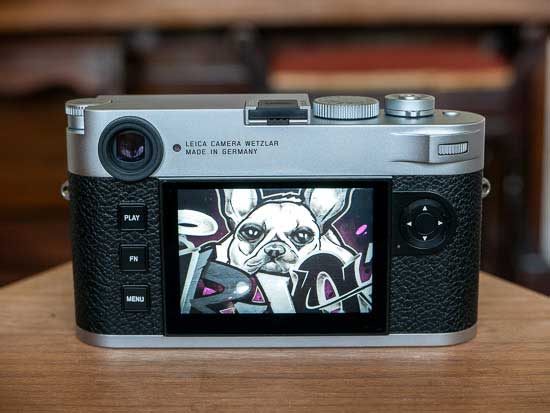

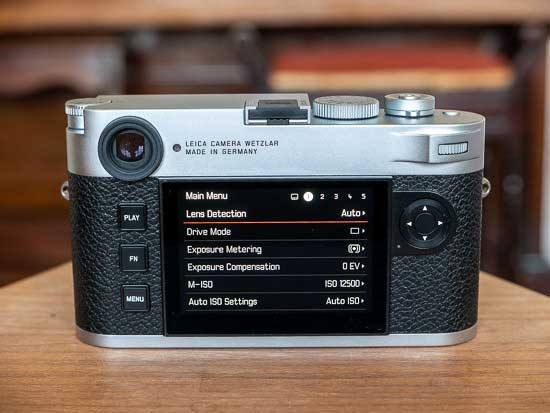



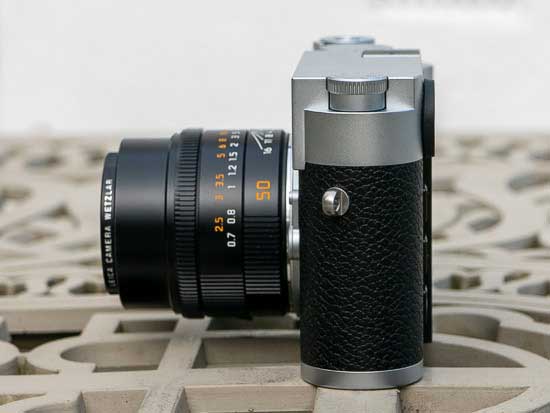
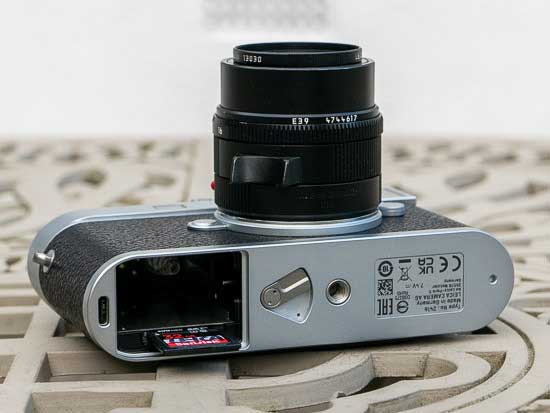


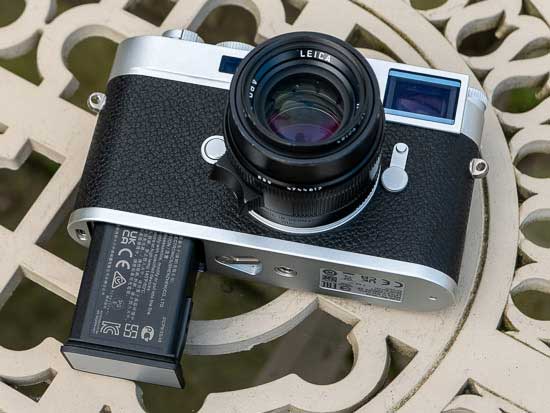
Conclusion
It might look nigh-on-identical to every other digital M-series model that has been released, but rest assured that thanks to all the under-the hood improvements, the new M11 is the best ever Leica M digital rangefinder.
Having said that, this is still an incredibly niche product that isn’t going to win over too many new converts. A manual-focus only, non-video shooting, 4.5fps rangefinder camera with no image stabilisation sounds like marketing madness at a time when other manufacturers are rushing to create all-in-one mirrorless hybrids that can shoot high-resolution stills at 30fps utilising cutting-edge AF algorithms and record 8K video too, but the M11 has more than enough chops and charm of its own to not only survive, but positively prosper in a fast-changing market.
The new 60 megapixel sensor at the heart of the Leica M11 pulls off the enviable trick of out-performing the 40 megapixel M10-R without introducing unwanted noise, even when shooting at full resolution, whilst offering even more dynamic range than its most recent predecessor. And for those who don’t want the inevitable storage and processing overheads of the headline-grabbing 60MP mode, Leica have thoughtfully included 36 and 18 megapixel modes, either with or without a digital crop applied.
Physical changes to the M11 are so few and far between that you’d be hard-pushed to tell the difference between it and any of the M10 models – if it ain’t broke, leave it well alone seems to be Leica’s sensible mantra.
One change that may displease some die-hard users but which we think is actually a big improvement is the removable baseplate, or rather the lack of one. Present on every M-system camera since time began, Leica have taken the very brave decision to replace it with a removable battery instead, instantly making it much easier and quicker to change the battery and memory card that’s located within the same compartment, as well as making tripod mounting more convenient.
The new battery offers longer battery life than previous models – up to 1700 shots if you don’t use live view – and the addition of USB-C charging makes sure that you should never run out of juice even on an all-day expedition. Likewise, the 64Gb of built-in memory is a nice-to-have feature for those awkward times when you forget to fit a memory card.
Value for money is always difficult to score when reviewing a Leica – most people will look at the £7,500 / $8,995 price-tag and think its madness that the M11 costs substantially more than a Canon EOS R5, Nikon Z9 or Sony Alpha A1, the current cream of the mirrorless crop – but Leica M owners will probably be pleased that the M11 only costs slightly more than 2020’s M10-R, despite all of the recent hikes in semi-conductor and shipping costs.
Ultimately the Leica M11 is an incredibly refined, pared-back tool that’s strictly for stills photographers who favour a slightly slower approach to their craft. We can’t really see it expanding the M-series userbase, despite being the best ever Leica M digital camera, but for die-hard fans it’s well worth upgrading from any of the different flavours of the M10-series.
| Ratings (out of 5) | |
|---|---|
| Design | 4.5 |
| Features | 4.5 |
| Ease-of-use | 4 |
| Image quality | 5 |
| Value for money | 3 |
Main Rivals
Listed below are some of the rivals of the Leica M11.
The EOS R5 has been the hottest full-frame camera on the block ever since Canon pre-announced it back at the start of 2020, thanks to its headline grabbing twin features of a 45 megapixel sensor and 8K video recording. We’ve seen it a few times since then, but now we can finally bring you our final Canon R5 review, complete with full-size sample photos and videos!
The new 100-megapixel medium-format Fuji GFX 100S is smaller, lighter and more versatile than the flagship GFX 100, and crucially, significantly cheaper too. So much so that it steps on the toes of high-end 35mm full-frame cameras like the Sony Alpha 1, Canon EOS R5 and Nikon Z7 II. Does the GFX 100S really prove that medium-format is “More than full-frame”, and is it really better than the GFX 100? Find out now by reading our in-depth review, complete with a huge gallery of full-size sample images and videos…
The new Fuji GFX 50S II is the most affordable medium-format ever released – it’s so cheap that it competes with high-end 35mm full-frame cameras like the Sony Alpha 7R IV, Canon EOS R5 and Nikon Z7 II. But surely there’s a catch – is it just too affordable for its own good? Find out now by reading our in-depth Fujifilm GFX 50S II review, complete with full-size sample photos and videos…
The Hasselblad 907X 50C is a digital medium-format camera like no other, utilizing a modular system that’s comprised of the 51.2-megapixel CVF II digital back and the retro 907X body. With a price tag of £5,999 for the back and body, one of the key attractions of the 907X 50C is its compatibility with film cameras, such as the Hasselblad 500C/M body and CF80mm f/2.8 lens that we tested it with. Read our in-depth Hasselblad 907X 50C with full-size sample photos and videos.
The Hasselblad X1D II 50c is a modern medium-format mirrorless camera with a 51 megapixel sensor, large 3.6-inch touchscreen LCD and an improved electronic viewfinder, all housed in a beautifully crafted body. Read our in-depth Hasselblad X1D II 50c review now…
The Leica M10 Monochrom is a manual focus rangefinder camera that only shoots in black and white and costs a whopping £7250 / $8295 for the body only. Does this super-niche version of the M10 offer the best ever b&w image quality? Find out now by reading our in-depth Leica M10 Monochrom review, complete with full-size JPEG and Raw sample images.
The Leica M10 is a new digital rangefinder camera, offering a 24 megapixel full-frame sensor, Maestro II Processor, optical viewfinder, built-in wi-fi connectivity and 5fps burst shooting. Is this the best ever digital M camera? Find out now by reading our in-depth Leica M10 review now…
The Leica M10-D is a simplified version of the M10 and M10-P digital rangefinder cameras, replacing the rear LCD screen with an exposure compensation dial. Why on earth would you consider buying a digital camera without an LCD screen?! Find out now by reading our in-depth Leica M10-D review…
The Leica M10-P is a stealthier, quieter version of the existing M10 digital rangefinder camera, offering a 24 megapixel full-frame sensor, Maestro II Processor, touchscreen control, optical viewfinder, built-in spirit level and 5fps burst shooting. Is the quietest M camera also the best ever digital M camera? Find out now by reading our in-depth Leica M10-P review…
The Leica M10-R is a brand new digital rangefinder camera, offering an upgraded 40 megapixel full-frame colour sensor, super-quiet shutter, and touch screen operation. Find out if this is the most versatile M10 camera ever by reading our in-depth Leica M10-R review, complete with full-size sample photos.
The Leica SL2-S is an impeccably built full-frame mirrorless camera, offering a 24.6 megapixel BSI sensor, DCI 4K/60p video recording, 25fps burst shooting, a class-leading EVF, IBIS worth 5.5 stops, ISO 100,000 and dual UHS-II SD memory card slots. Read our in-depth Leica SL2S review to find out what this £3,975 / $4,895 camera is capable of…
The Nikon Z7 II full-frame mirrorless camera is the 2020 update of the original Z7 model, principally improving the autofocusing, buffer and video and adding a second memory card slot. Are these changes enough for it to compete with its main rivals like the Sony A7R IV and the Canon EOS R5? Find out now by reading our in-depth Nikon Z7 II review, complete with full size sample photos and videos…
The Sony Alpha 1 camera, or Sony A1 for short, is the best camera that Sony have ever released, and currently the best all-round camera on the market. It’s also one of the most expensive, so read our in-depth Sony A1 review complete with full-size sample JPEG and Raw photos and movies to find out if it’s truly the One for you…
The new Sony Alpha A7 IV is a new 33 megapixel, 4K/60p video, 10fps burst shooting, cutting-edge auto-focusing hybrid full-frame mirrorless model that pulls no punches in its bid to be the only camera that you need. Find out why we think this is one of the best all-round cameras of 2021 by reading our in-depth Sony A7 IV review…
Review Roundup
Reviews of the Leica M11 from around the web.
Leica had a real challenge this time around. In just a little over a decade, the legendary German camera maker had progressed from its first rudimentary attempt at a digital rangefinder camera in the M8 to what I dubbed the quintessential digital M with the M10. And since its introduction in 2017, the M10 has gotten some significant updates – the M10-P with an ultra-quiet shutter, touchscreen and level gauge, then later the M10-R, which upped the sensor resolution from 24 megapixels all the way to 40. How could a digital M be improved much further?
Read the full review »
There’s something very special about Leica’s M-series rangefinders. They’re the last surviving example of a camera type that was long ago made almost completely redundant by SLRs, but which still offers characteristics that some photographers find highly desirable. Uniquely they can also boast an unbroken lineage back to the Leica M3 of 1955, having made the leap from film to digital with surprisingly little change in design. So whenever a new-generation model appears, it’s something of an event.
Read the full review »
The Leica M11 delivers the unique shooting experience that’s typical of these manual-focus rangefinders, while embracing new technology like a new 60MP full-frame BSI sensor and 64GB of internal storage. With great image quality, a beautifully minimal design and exceptional build quality, the M11 oozes quality. But its 60MP resolution is very unforgiving when it comes to focusing errors. And the combination of this and the M11’s premium price tag make it a super-niche camera for enthusiasts only.
Read the full review »
Specifications
Camera type Digital system camera with rangefinder
Type no. 2416
Order No. Black: 20 200 (EU/US/CN), 20 202 (JP), 20 206 (ROW)
Silver: 20 201 (EU/US/CN), 20 203 (JP), 20 207 (ROW)
Buffer memory 3 GB
DNG™: 15 recordings
JPG: > 100 recordings
Storage medium UHS-II (recommended), UHS-I, SD/SDHC/SDXC memory card (SDXC cards up to 2 TB, internal memory 64 GB)
Material Black: full-metal housing made of magnesium and aluminum, leatherette cover
Silver: full-metal housing made of magnesium and brass, leatherette cover
Lens mount Leica M bayonet with additional sensor for 6-bit encoding
Operating conditions +0 to +40 C
Interfaces ISO accessory shoe with additional control contacts for Leica flash units and Leica Visoflex 2 viewfinder (optional accessory),
USB 3.1 Gen1 Typ-C
Tripod thread A 1⁄4 DIN 4503 (1⁄4”) with stainless steel in the base
Weight Black: approx. 530 g/455 g (with/without battery)
Silver: approx. 640 g/565 g (with/without battery)
Sensor
Sensor size CMOS sensor, pixel pitch: 3.76 μm, 35 mm: 9528 x 6328 pixels (60.3 MP)
Processor Leica Maestro series (Maestro III)
Filter RGB color filter, UV/IR filter, no low-pass filter
File formats DNG™ (raw data, loss-free compression), DNG + JPG, JPG (DCF, Exif 2.30)
Image resolution DNG™ L-DNG 60.3 MP 9528 x 6328 pixels
M-DNG 36.5 MP 7416 x 4928 pixels
S-DNG 18.4 MP 5272 x 3498 pixels
JPG L-JPG 60.1 MP 9504 x 6320 pixels
M-JPG 36.2 MP 7392 x 4896 pixels
S-JPG 18.2 MP 5248 x 3472 pixels
The entire sensor surface will always be used irrespective of format and resolution.
Digital Zoom 1.3x and 1.8x available (always based on L-DNG or L-JPG)
File size DNG™ L-DNG approx. 70–120 MB
M-DNG approx. 40–70 MB
S-DNG approx. 20–40 MB
JPG L-JPG approx. 15–30 MB
M-JPG approx. 9–18 MB
S-JPG approx. 5–9 MB
JPG: depending on resolution and image content
Color depth DNG™: 14 bit, JPG: 8 bit
Color space sRGB
Viewfinder/LCD panel
Viewfinder Large, bright-line rangefinder with automatic parallax compensation, suitable for -0.5 dpt; optional corrective lenses available:
-3 to +3 dpt
Display Four-digit digital display with items show on the top and bottom, Image field limiter: two lit frames: 35 mm + 135 mm, 28 mm + 90 mm,
50 mm + 75 mm (automatic switchover when lens is attached)
Parallax compensation The horizontal and vertical difference between viewfinder and lens is compensated automatically in line with the relevant focus
setting. Congruence of viewfinder and actual image. The size of the bright-line frame matches the distance:
– at 2 m: the exact sensor size of approx. 23.9 x 35.8 mm
– at infinity: (depending on focal length) approx. 7.3% (28 mm) to 18% (135 mm)
– less than 2 m: less than sensor size
Viewfinder magnification x0.73 (all lenses)
Large-base rangefinder Split or superimposed image rangefinder shown as a bright field at the center of the viewfinder image
LCD panel 2.95” (Active Matrix TFT), Gorilla Glass 5 cover glass, 2 332 800 dots, format 3:2, touch control available
Shutter
Shutter type Electronically controlled focal plane shutter and electronic shutter function
Shutter speeds Mech. shutter: 60 min to 1⁄4000 s
Electro. shutter function: 60 s to 1⁄16000 s
Flash Synch: up to 1⁄180 s
Optional noise reduction via additional “black picture” (can be disabled)
Shutter button Two-stage
(1st stage: activation of the camera electronics including exposure metering and metering memory lock, 2nd stage: taking the picture)
Self-timer Delay time: 2 s or 12 s
Drive Mode Single
Continuous – Low Speed (3 fps)
Continuous – High Speed (4.5 fps)
Interval Shooting
Exposure Bracketing
Focusing
Focus range 70 cm to ∞
Focus mode Manual (focus assist functions Magnification and Focus Peaking available)
Exposure
Exposure metering TTL (exposure metering through the lens), with working aperture
Metering principle Exposure metering is done by the image sensor for all exposure metering methods (in Live View mode and in rangefinder mode)
Exposure metering methods Spot, Center-Weighted, Multi-Field
Exposure modes Aperture priority mode (A): Automatic shutter speed control with manual aperture preselection
Manual (M): manual setting for shutter speed and aperture
Exposure compensation 3 EV in 1⁄3 EV increments
Automatic bracketing 3 or 5 shots, graduations between shoots up to 3 EV, in 1⁄3 EV increments, additional optional exposure compensation: up to 3 EV
ISO sensitivity range Auto ISO: IS0 64 (native) to ISO 50 000, also available in flash mode
Manual: ISO 64 to ISO 50,000
White balance Automatic (Auto), Default (Daylight – 5200 K, Cloudy – 6100 K, Shadow – 6600 K, Tungsten – 2950 K, HMI – 5700 K,
Fluorescent (warm) – 3650 K, Fluorescent (cool) – 5800 K, Flash – 6600 K), manual metering (Gray card), manual color temperature
setting (Color Temperature, 2000 K to 11,500 K)
Flash
Flash unit connector Via the accessory shoe
Metering principle Flash exposure metering is done by the image sensor for all exposure metering methods (in Live View mode and in rangefinder
mode)
Flash sync time : 1⁄180 s, slower shutter speeds available, automatic switchover to TTL linear flash mode with HSS-compatible Leica system
flash units if sync time is undercut
Flash exposure metering Using center-weighted TTL pre-flash metering with Leica flash units (SF 26, SF 40, SF 58, SF 60, SF 64) or with system-compatible
flash units, remote controlled flash SF C1
Flash exposure compensation SF 40: 2 EV in 1⁄2 EV increments
SF 60: 2 EV in 1⁄3 EV increments
Other: 3 EV in 1⁄3 EV increments
Displays in flash mode
(in the viewfinder only)
Flash icon: Connection of an external flash unit
Equipment
WLAN The Leica FOTOS app is required to use the WLAN function. The Leica app is available from the Apple App Store™ or the Google
Play Store™. 2.4 GHz/5 GHz* dual band IEEE802.11 a/b/g/n/ac Wave2 WLAN (standard WLAN protocol), encryption method:
WLAN-kompatible WPA™/WPA2™, access method: infrastructure mode
Regional Variant
EU/US/CN JP ROW
Wi-Fi
5 GHz*
11a/n/ac:
channel 149–165
(5745–5825 MHz)
11a/n/ac:
channel 36–48
(5180–5240 MHz)
–
Wi-Fi
2.4 GHz
11b/g/n:
channel 1–11 (2412–2462 MHz)
Bluetooth* Bluetooth v4.2 BR/EDR/LE, BR/DR-channel 1-79, LE-channel 0-39 (2402–2480 MHz)
GPS* Geotagging via Leica FOTOS app using Bluetooth
Menu languages English, German, French, Italian, Spanish, Russian, Japanese, Simplified Chinese, Traditional Chinese, Korean, Portuguese
Power supply
Rechargeable battery
(Leica BP-SCL7)
Li-Ion (Lithium-Polymer) rechargeable battery, rated voltage: 7.4 V / capacity: 1800 mAh, Charging voltage/current: DC 1000 mAh,
7.4 V, operating conditions: +10 C to +35 C (charging) / +0 C to +40 C (discharged), manufacturer: Fuji Electronics (Shenzhen)
Co., Ltd. made in China
Approx. 700 shots (in accordance with CIPA Standard in rangefinder mode), up to approx. 1700 shots (Leica adapted shooting cycle)
Charger (Leica BC-SCL7) Input: USB-C DC 5 V, 2 A, output: DC 8.4 V, 1 A, operating conditions: +10 C to +35 C, manufacturer: Dee Van Enterprises Co.,
Ltd.., made in China
Power pack (Leica ACA-SCL7) Input: AC 110 V – 240 V ~ 50/60 Hz, 0.3 A, output: DC 5 V, 2 A, operating conditions: +10 C to +35 C, manufacturer: Dee Van
Enterprises Co., Ltd.., made in China
USB Power supply When in standby mode or Off: USB charging function
When On: USB power supply and intermittent charging
Your Comments




